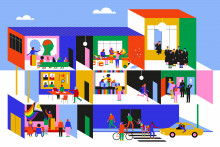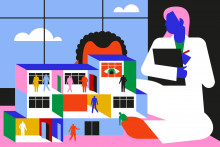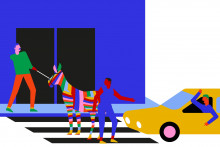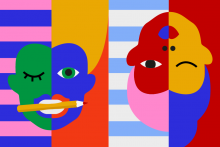Of the 20 institutions studied, 13 have said they are examining their teaching material in order to make it more inclusive.
There is currently no overview of if and how decolonisation of curriculum takes place at the University of Twente.

All of the 20 institutions studied regularly organise events around the theme of diversity and inclusion. These can be lectures and debates as well as informal networking events or outreach programmes.
At the UT, there is now the annual Diversity Week in the first week of October. Individual UT groups and initiatives, such as the Female Faculty Network and Think with Pride, also regularly organise events related to diversity.

Each institution has organised its diversity policy differently. Diversity officers often form part of an HR or student affairs department. Of the 20 institutions, 7 have a separate, recognisable space for the diversity office.
The University of Twente indeed has its own Diversity, Equity and Inclusion (DE&I) Team, which consists of the DE&I Officer Sterre Mkatini, HR Policy Advisor Michael Neys and Communication Advisor Linda Pasqual - van der Landen. They have their own physical office on campus.

These figures only apply to research universities, not to universities of applied sciences. All 13 universities have target figures for the appointment of female professors. Only Eindhoven University of Technology also has a quota of female professors who must have been appointed by a specific time.
About 21% of all UT professors are currently women. The goal is to reach 25% of full women professors by 2025.

We found a public LGBTQI symbol on the premises of 9 of the 20 institutions studied. These are often rainbow zebra crossings, stairs or ramps.
There might not be a rainbow zebra crossing but the UT does have its own ‘rainbow bench’, which you can find close to the main entrance to the campus.

All of the institutions studied have or soon plan to have at least one gender-neutral, or all-gender, toilet. Sometimes, it takes a while to discover where these are and how many there are.
At the University of Twente, there are currently all gender toilets in the Horst building and one is about to open in the Bastille building. More all gender toilets should be opened in various buildings across campus next year, according to DE&I officer Sterre Mkatini.

All of the institutions studied are also taking action to make the staff recruitment process more inclusive. They are offering training and resources during recruitment and making it clear in job advertisements that the institution is open to everybody.
The UT also aims to provide vacancy texts that encourage a diverse group of people to apply for the position.

All of the institutions studied have a form of unconscious bias training that teaches staff and students to recognise and address their own blind spots and unconscious biases. These training sessions are not mandatory at most institutions.
At the UT, unconscious bias trainings are also standardly offered by HR for people that join a BAC (Assessment and Appointment committee).

study
For this study, 36 policy documents of 21 educational institutions were analysed. The institutions comprised 13 research universities and 8 universities of applied sciences.* The documents included visions, strategies, policy documents, action plans and position papers in which educational institutions set out their plans.
* The participating media of the research universities and universities of applied sciences are affiliated with the Circle of Editors-in-chief of Higher Education Media.
The following institutions were studied:
Fontys University of Applied Sciences, University of Groningen, VU University Amsterdam, Utrecht University, University of Twente, Avans University of Applied Sciences, Eindhoven University of Technology, Erasmus University Rotterdam, Rotterdam University of Applied Sciences, Radboud University Nijmegen, University of Applied Sciences Utrecht, Delft University of Technology, HAN University of Applied Sciences, Maastricht University, Amsterdam University of Applied Sciences, Hanze University of Applied Sciences, Tilburg University, Saxion University of Applied Sciences, University of Amsterdam, Wageningen University, Leiden University.
This study was partly made possible by a contribution from the Journalism Promotion Fund.







